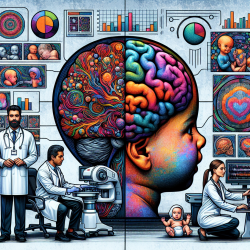Introduction to CHARGE Syndrome and Cranial Imaging
CHARGE syndrome is a complex genetic disorder characterized by a wide range of congenital anomalies and clinical symptoms. With an incidence of approximately 1 in 15,000, the syndrome presents significant challenges in diagnosis and management due to its high variability in comorbidity and severity. A recent research article titled "Guidelines in CHARGE syndrome and the missing link: Cranial imaging" highlights the importance of comprehensive cranial imaging in the diagnosis and management of CHARGE syndrome.
The Importance of Cranial Imaging
Cranial imaging plays a crucial role in the timely diagnosis and treatment of CHARGE syndrome. It provides valuable insights into the anatomical abnormalities associated with the syndrome, which can significantly impact clinical decisions and patient outcomes. The research emphasizes the need for standardized guidelines for neuroimaging protocols to ensure efficient and comprehensive care for individuals with CHARGE syndrome.
Key Findings from the Research
The research conducted a structured literature review and identified several key findings:
- Semicircular Canal Abnormalities: These are present in 95% of individuals with a pathogenic variant in the CHD7 gene, making it a prevalent clinical feature.
- Olfactory System Hypoplasia: This is commonly observed in CHARGE syndrome and can be used to predict hypogonadotropic hypogonadism (HH) in patients.
- Skull Base Anomalies: Abnormalities such as a J-shaped sella and dorsal angulation of the clivus are frequently observed, providing additional diagnostic tools.
Implementing Research Outcomes in Practice
For practitioners, the research provides actionable insights that can be implemented to enhance diagnostic accuracy and patient management:
- Comprehensive Imaging Protocols: Adopting standardized neuroimaging protocols can improve the detection of cranial abnormalities and reduce the need for repeated imaging under anesthesia.
- Multidisciplinary Approach: Collaborating with a team of specialists, including radiologists, geneticists, and otolaryngologists, can ensure a holistic approach to patient care.
- Early Diagnosis and Intervention: Early identification of cranial abnormalities allows for timely interventions, which can significantly improve patient outcomes.
Encouraging Further Research
While the research provides a solid foundation for clinical practice, it also highlights the need for further research into the cranial abnormalities associated with CHARGE syndrome. Practitioners are encouraged to contribute to ongoing research efforts to enhance our understanding of the syndrome and improve patient care.
Conclusion
In conclusion, the integration of comprehensive cranial imaging into the diagnostic and management processes for CHARGE syndrome holds significant potential for improving patient outcomes. By implementing the research findings and adopting a collaborative, data-driven approach, practitioners can enhance their skills and provide more effective care for children with CHARGE syndrome.
To read the original research paper, please follow this link: Guidelines in CHARGE syndrome and the missing link: Cranial imaging.










